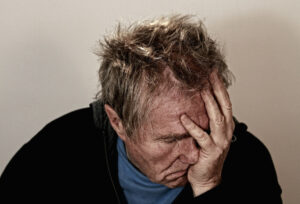There Is Actually Good News About Bipolar Disorder
There’s a lot of good news about treating bipolar disorder. We now know that treating it appropriately and aggressively during the first episode can change the course of the illness lifelong. We’ve gained a new understanding on when to add in an atypical antipsychotic (that is, more often), when to use a “mood stabilizer” (that is, less often), and when to add an antidepressant (again, more often). Psychosocial therapies for bipolar disorder help remarkably to prevent a relapse as months and years go by. A “psychoeducational” approach might be the most helpful. These therapies can now be built into any treatment plan. So be encouraged. The whole treatment approach has gotten better. As always, we’re on your side. We praise what works, debunk anything that doesn’t work, and encourage you to better health and better care.
Welcome to the Neuroscience Research and Development Consultancy website. Have a question or a comment? Send it to us at: Comment@NeuroSciRandD.com
Articles related to Bipolar Disorder:
Defining Bipolar Disorder – Big Mood Ricochets in Opposite Directions
Bipolar means 2 poles. Like a north and a south pole, but in this case it’s a manic pole and a depressed pole. And they are, pardon the pun, polar opposites. For a long time bipolar disorder was called manic depression. Both mania and depression are caused by physical brain changes. Each of these two physical brain states affect a person’s behavior in specific ways. And changed behavior changes lives. These effects are mostly the opposite of each other, the low, slowed, miserable depths of a severe depression and the accelerated highs of a roaring, chaotic, destructive mania.
A Reader in Melbourne Asked:
My uncle is a mess of a family black sheep. Recently a doctor said he had bipolar. My dad said it’s not a real illness, that my uncle is just a mess. What’s the truth?
Bipolar disorder is a real medical illness, as you’ve been reading on this page. If your uncle has had bipolar disorder and it wasn’t diagnosed and treated appropriately it’s easy to see why he’s viewed as a black sheep member of the family. With all due respect, because he is your father, you’re Dad’s wrong. The hope would be that now that your uncle has seen a doctor and knows he has bipolar disorder, he will get appropriate treatment and get to a normal mood. Maybe over time he’ll no longer be a black sheep and the rest of the family will stop saying that he’s a mess. He needs the right medications to get his mood normal and a quality psychotherapist to guide him on a productive life path. Bipolar disorder doesn’t go away. It’s a lifelong medical condition, just like type-1 diabetes is a lifelong medical condition.
Bipolar Disorder Symptoms
Below we go into more detail on the signs and symptoms of mania, of depression, and of that perhaps good but perhaps concerning brain state of “not-quite-manic” (hypomania). For the person with bipolar disorder, the times of mania might last a few weeks or months. The depressed times, on the other hand, can last a few months or several years. The goal of treatment is a normal mood, the same normal mood like everyone has. The length of time in the normal mood in the middle between depression and mania is harder to predict, but it can last a lot longer with the right medication and stabilizing, educational psychotherapy. The not-quite-manic mood, hypomania, is even harder to predict and, as good as it might feel, it can be dangerous.
Bipolar Mania Symptoms – The Accelerated Pole of Bipolar Disorder
Mania actually erupts in any one of several different moods. It can be an up mood, full of energy, and optimism, and self-confidence. On the other hand, mania can also be irritable, angry, and high-energy hostile. Some people, when manic, have changing moods, at times happy and engaging and at other times angry, driving people away. The inability for people to predict which mood will come next is a real problem. That said, at times the anger can come out in reaction to the attitudes of people around the manic individual. They might be moving with optimism and high energy toward some goal they have set. When some sensible person around them points out that what they’re planning to do is highly risky or won’t work, they get angry and hostile.

More on Symptoms of Mania
Mania is much more than feeling “up”. It is possible to feel too good (though feeling too good is hard for most of us to imagine!) and mania is feeling way too good. Mania is the up mood and a driven acceleration. Unfortunately, it also involves a loss of judgment. Poor choices, one after another, create big problems. The guy with mania believes he’s right even when he’s dead, flat wrong. When manic, an individual feels that nothing can go wrong. Even in really bad situations, they falsely believe it’s all going to be okay. So they take risks, big risks, that they should not take. They can’t see the risk, can’t see any possible downside. They can feel super capable or even powerful. As a result, they might take big risks with money, or with sex, or with relationships. It can get ugly.
Even More Signs and Symptoms of Mania
When manic, people have big energy surges, and these drive the need to be far too active. And since they view the world as free of any risk, active high energy is a problem. Another possible dilemma for people around a manic individual is their tendency to talk quickly and continuously. Their thoughts and their comments can hop from one topic to another faster than people around them can keep up, faster than people around them can think. But if helpful people try to slow them down, as we mentioned above, a person in the midst of a manic episode can easily turn from up and driven to high energy irritable and even nasty angry.
Bipolar Depression Symptoms – The Depressed Pole of Bipolar Disorder
People with bipolar depression are really, badly depressed. That is, bipolar depression is bad. An ordinary sad mood is familiar to everyone. This bipolar depressed mood is not only worse, it’s just plain completely different, a completely different type of mood. It’s a brain-based medical condition that’s an extreme form of gloom, pessimism, and often irritability. They have little energy and don’t do much. They usually either can’t sleep or they sleep too much, and they’re either not hungry or they eat too much. Nothing is fun or enjoyable. They can’t think clearly, can’t concentrate, and are forgetful. They’re tired and slow, feeling worried, anxious, and empty. At the worst, they can think they know with certainty that life is not worth living and attempt suicide. At times, sadly, they succeed at taking their own life.
Bipolar Disorder Treatment
Click this link to see our free public page on bipolar disorder treatment. And for a discussion of something quite strange, if you’re a subscriber, see our page on lessening the symptoms of bipolar depression by adding the antibiotic minocycline to a person’s standard bipolar disorder medications. It’s on the page called Minocycline + Aspirin for Bipolar Disorder.

The Special Case of Not-Quite-Manic and the Roller-Coaster of Bipolar Life
There is a “mood-in-the-middle” in bipolar disorder that’s not a normal mood. This mood-in-the-middle is more accelerated than a normal mood but not as accelerated as mania. An important difference to understand here is that the variance between this not-quite manic mood and full mania has less to do with acceleration and more to do with keeping or losing good judgement. Judging situations well is the ability to know what makes sense and what makes no sense at all. The person in a mood of not-quite manic hypomania usually keeps their good, common sense. When that person goes into full mania they lose the ability to tell what makes sense and what doesn’t.
More on Hypomania, the Not-Quite Manic Mood
This not-quite-manic mental state feels fine, and can be fine, but it’s dangerous. It’s like a traffic crash or a sports injury. Everything seems fine, maybe better than fine, until, all of a sudden, it’s not fine anymore. The person with bipolar disorder who is in this hypomanic state just feels really good. They can do really well with everything in life. It’s almost not possible for them to think that there’s anything wrong, and if their mood could stay right where it is, maybe nothing would be wrong. And people around the individual who do not know them might not see anything wrong, either. When hypomanic, an individual might have charisma and success. But people who know them well can see the change and understand that it’s a warning, like a bright yellow flashing light. Caution, a full manic episode might be on the way.
The Life History of the Successful Bipolar Person
People through the centuries have noticed that many individuals with bipolar disorder are quite successful. It’s true. Through their life the person with bipolar disorder might go through years of great success, big wins, the good life. That’s because, if they are in the state of not-quite manic hypomania, they keep good judgment but are accelerated. They think faster, see strategies, and understand situations that most people of normal mood don’t see or don’t see as quickly. If they had control of their moods (which they don’t) and could stay hypomanic, it might be great for them. But it doesn’t work that way. At some point, without them realizing it, the hypomania slides subtly, imperceptibly into mania. With real mania, the person’s judgement falls apart. All their successes might well go down the drain.
Alternating Life Styles with Bipolar Disorder
People with bipolar disorder can become billionaires and yet die poor. They can have several cycles of boom and bust during their lives, on top of the world then down and out, over and over again. If they’re lucky, in their final years that can remain wealthy. Hopefully wealthy enough to have their final years be comfortable. Yet again, they can be rich and world famous, liked and loved, yet end life by suicide at a young an age. (As an illustration in literature, do a search for the 1897 poem “Richard Cory” by Edwin Arlington Robinson. The singer and song writer Paul Simon turned the poem into a song, “Richard Cory“, that the musical duo Simon and Garfunkel recorded. It’s on their second album, “Sounds of Silence”.)

Similarities with Both Mania and Depression
Both mania and the severe depression that is bipolar depression can land a person in a doctor’s office and maybe in the hospital. Both of these disordered brain states need to be treated with medication and quality medical care. There is no psychotherapy that, by itself, works for mania or for bipolar depression. Both can and do destroy relationships, families, friendships, businesses, and lives. More and better medications are being developed and approved to treat bipolar disorder, both the mania and the depression.
Bipolar Disorder is a Common Disorder
Bipolar disorder is not a rare medical condition. At least 1 out of every 100 people have bipolar disorder, and the percentage could be as high as 3 out of every 100. Doing the arithmetic, that calculates to 75 million to 225 million people worldwide. These are not small numbers. Many people have bipolar disorder.
Once Bipolar Disorder Starts It Lasts a Lifetime
Bipolar disorder is the way that a person’s brain is built, the way the cells and circuits connect and react. It’s a lifelong medical condition, a brain dysfunction. Mania follows depression and depression comes after mania. There might or might not be a time of normal mood in between the mania and depression, as the individual goes from one mood extreme to the other. The right medication and quality psychotherapy throughout their life is the best path to a productive, enriched life. And, quality psychotherapy is not with any random therapist on the next corner. The therapist needs to be well-trained, experienced, conscientious, and, well, likable. The person with bipolar disorder has to like meeting and working with them.
The Cause of Bipolar Disorder Is Not Known
No clear and single cause for bipolar disorder has been found. There are risk factors that add together to make the likelihood of a person having bipolar disorder higher. A family history of bipolar disorder or schizophrenia, for example. And, adverse life events at any age, but especially in childhood or adolescence.

You Also Need a Bipolar Disorder Guide – Therapy
The roller coaster moods of bipolar disorder are frightening and uncontrollable without medication. It takes years for the person with bipolar disorder to understand what is happening to them. While we say that medication is necessary to treat it, that does not mean that psychotherapy is not necessary. As with most medical conditions, medications can’t solve everything. Call it education, call it psychotherapy, call is a “bipolar disorder user’s group”, but whatever name is most comfortable for the person with bipolar disorder, the therapist is a necessary person who knows the territory and can be a guide. A guide for how to live better with the bipolar disorder.
Helpful links:
National Institutes of Health, National Institute of Mental Health
NIH/NIMH on Bipolar Disorder
National Library of Medicine (United States), MedlinePlus
MedLinePlus on Bipolar Disorder
The Mayo Clinic on Bipolar Disorder
American Psychiatric Association on Bipolar Disorder
National Alliance on Mental Illness on Bipolar Disorder

